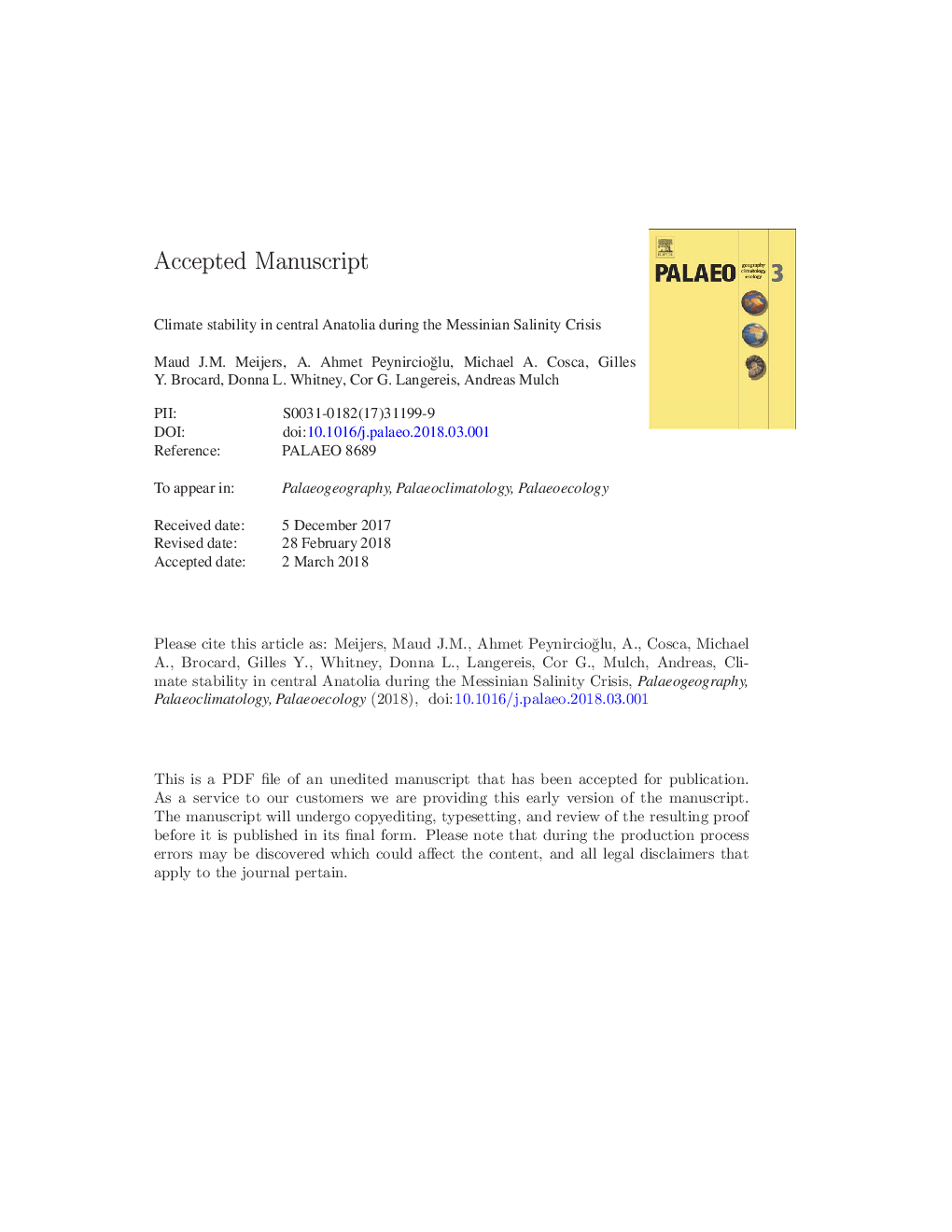| Article ID | Journal | Published Year | Pages | File Type |
|---|---|---|---|---|
| 8868241 | Palaeogeography, Palaeoclimatology, Palaeoecology | 2018 | 45 Pages |
Abstract
The Kangal Basin isotope record indicates a low degree of evaporation. Furthermore, covariance between δ13C and δ18O suggests a coupling between lake water balance and biologic productivity. Variations in δ13C and δ18O therefore likely reflect changes in the amount of incoming precipitation, rather than changes in δ18O values of incoming precipitation. The most prominent spike in δ13C and δ18O occurs during the acme of the MSC and is therefore interpreted to have resulted from a decrease in the amount of incoming moisture correlative to a period of vigorous erosion and sea level lowering in the Mediterranean Basin. Major sea level lowering of Mediterranean basin waters during the acme of the MSC could have therefore led to slightly dryer conditions over Anatolia, which is also suggested by modeling studies. Overall, changes in δ13C and δ18O values are small. Therefore, we surmise that the MSC had limited effects on the paleoenvironmental and paleoclimatic conditions in the Anatolian interior.
Keywords
Related Topics
Physical Sciences and Engineering
Earth and Planetary Sciences
Earth-Surface Processes
Authors
Maud J.M. Meijers, A. Ahmet PeynircioÄlu, Michael A. Cosca, Gilles Y. Brocard, Donna L. Whitney, Cor G. Langereis, Andreas Mulch,
